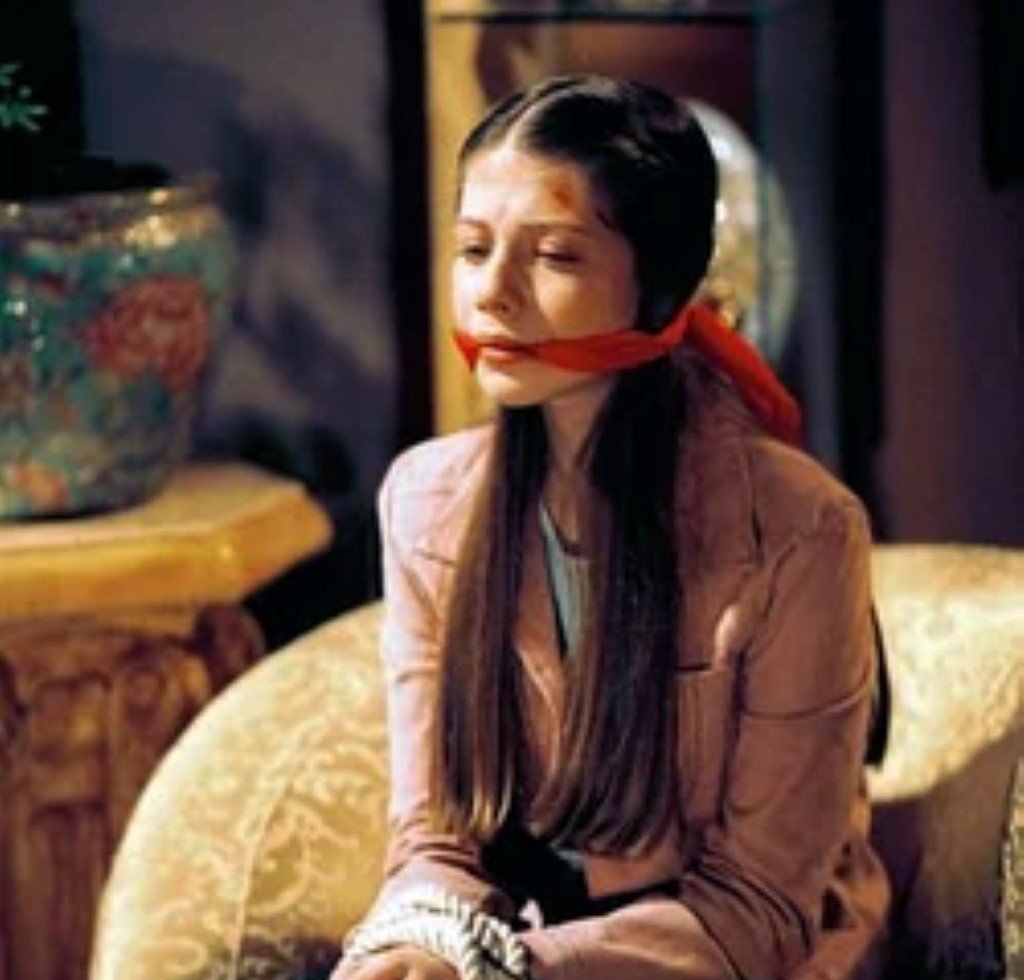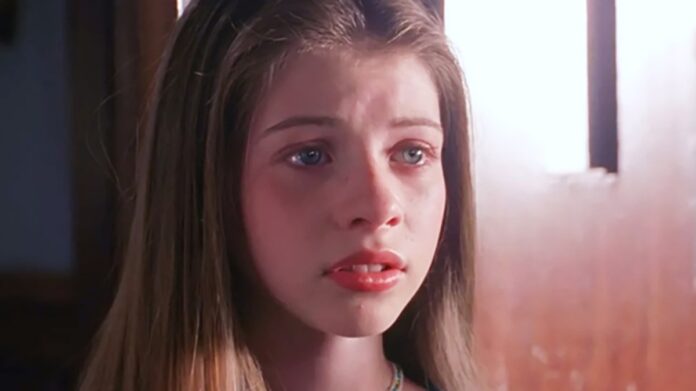Buffy the Vampire Slayer (1997-2003) may be a relatively young show, but it’s brimming with captivating female characters, making it a prime candidate for discussion in one of my columns.
However, selecting just one character to focus on posed a challenge.
There’s Buffy herself, the iconic figure in the Whedonverse, a feminist superhero who also ranks among the greatest TV characters of all time.
Then there’s Willow, who transformed from an insecure, timid teen into a formidable, self-assured witch.
Cordelia was also a contender due to her unique subversion of the typical mean girl archetype, as she evolved into a hero in her own right.
Ultimately, though, I found myself drawn to Dawn, Buffy’s younger sister and perhaps the most unfairly criticized member of the Scooby Gang.
Dawn made her entrance at the conclusion of “Buffy vs. Dracula,” the opening episode of season five, immediately emphasizing her status as the little sister.
Fans were initially taken aback by the sudden appearance of Buffy’s previously unmentioned sibling, leading to comparisons with Cousin Oliver Syndrome.
However, series creator Joss Whedon had been hinting at Dawn’s arrival as early as season three.
It was eventually unveiled that Dawn was The Key, an ancient energy entity with the power to breach dimensional barriers and unleash catastrophic chaos if it fell into the wrong hands (which, in this case, belonged to the charismatic god Glory).
To prevent this, the monks responsible for safeguarding The Key transformed it into Dawn, whom they then dispatched to Buffy.
They altered Buffy’s memories, as well as those of her friends and family, to create the illusion that Dawn had always been a part of their lives.
Unfortunately, the fans’ memories were not so easily manipulated. Dawn was perceived as an intruder, and an often irritating one at that, primarily due to her teenage angst.
When Dawn was introduced, she was just fourteen years old, desperately seeking attention and approval.
She also demanded a significant portion of Buffy’s time in season five, especially following the loss of their mother, Joyce, in “The Body.”
At that point, Buffy assumes the role of Dawn’s guardian, pushing the slayer toward maturity while allowing Dawn to remain firmly rooted in childhood.
Ultimately, by the season’s end, Dawn becomes the catalyst for Buffy’s most significant sacrifice: Buffy chooses to close the portal opened with Dawn’s blood by Glory in “The Gift,” sacrificing herself so her sister could live.

In the beginning, Dawn’s existence primarily served as a catalyst for Buffy’s character development as Buffy began to confront and embrace the responsibilities of adulthood.
Dawn’s character was less significant than the role she played for Buffy and the series itself, providing a means to transition away from the central premise of “high school is hell” that had driven the show for so long.
With Buffy having graduated from high school long ago and no longer needing to protect an entire student body at Sunnydale High, the show lacked a central focus.
Dawn became that focus, offering Buffy a reason to continue her fight.
From a viewer’s perspective, the qualities that made Dawn valuable to Buffy also made it challenging to appreciate her as a character.
Being the youngest member of the group, she frequently found herself in situations that necessitated Buffy’s intervention to save the day.
This phenomenon was humorously acknowledged in season six’s musical episode, “Once More with Feeling.”
When informed that Dawn had been kidnapped by the dancing demon Sweet, Buffy’s response was:
Dawn’s in trouble. Must be Tuesday.
By that point, Dawn had assumed the role of the default victim within the Scooby Gang, a role previously occupied by Willow (before her power surge) and Xander in the early years.
One of Dawn’s contemporaries, Kim Bauer from “24,” faced similar ridicule for what the audience perceived as her constant ineptitude, leading her father, Jack, to repeatedly rescue her.
In both cases, the writers relied too heavily on these characters as mere plot devices.
While heroes require someone to save, if they are consistently rescuing the same person, it reflects poorly on that character.

The fact that both Dawn and Kim happen to be teenage girls only exacerbates the audience’s tendency to criticize any perceived weakness.
This is especially true for Dawn, who existed in a universe where teenage girls frequently saved the world.
Portraying characters like Dawn and Kim as damsels in distress reinforces the notion that young women are less capable than their male counterparts.
Popular culture has conditioned us to believe that teenage girls in action-driven narratives serve only as plot devices.
When the reality is more nuanced, our immediate reaction is resistance.
In action films like 2009’s Taken, which used the kidnapping of a retired CIA agent’s teenage daughter to pull him back into the world of espionage, or in the most recent season of Homeland, which thrust Agent Brody’s daughter Dana into the spotlight as one of the most disliked characters on television, teenage girls are consistently perceived as burdens on the heroes (and in the case of Agent Brody, I use the term “hero” very loosely).
The question then becomes whether this issue lies with the writers or with the viewers’ perception of whose story holds the most value.
Teenagers are often marked by their angst, which is a natural part of growing up, and something that many of us can empathize with.
As “Buffy the Vampire Slayer” (BTVS) progressed, Dawn grappled with kleptomania and feelings of abandonment as various parental figures let her down.
However, because the audience had witnessed Buffy and her friends growing up without much parental guidance, Dawn’s yearning for stability was perceived as a flaw on her part.
In reality, it was a typical response for a regular teenager.
Unfortunately for Dawn, Sunnydale wasn’t a place where normal behavior thrived.
In contrast to her older counterparts, Dawn’s teenage years weren’t depicted with hyper-stylized metaphors.
Buffy the Vampire Slayer was fundamentally a show about teenagers and adeptly tackled the challenges of young adulthood, but Dawn was the series’ first genuine teenager.
Michelle Trachtenberg, who portrayed Dawn, was the same age as her character.
When the series began in 1997, Sarah Michelle Gellar, Nicholas Brendon, and Alyson Hannigan were all in their twenties, and the visual contrast between their early appearances and Dawn’s is striking.
It’s not just that they looked like adults (which they did, particularly when compared to Trachtenberg); it’s that they lived in a world fraught with danger that required them to act like adults.
From the outset, Buffy, Xander, and Willow were tasked with averting apocalyptic threats, and apart from Buffy’s Watcher, Giles, parental figures played a minimal role in their daily lives.
Even as they navigated the routines of high school, it was challenging to see them as typical teenagers.
Dawn was all about being a typical teenager.
In her first episode that showcased her character, Real Me, we get a glimpse of the world from her perspective.
She admits to having a crush on her big sister’s best friend, Xander, expresses her frustration with the way Buffy perceives her as ‘her dumb little sister,’ and reveals her strong desire to be seen as an adult, despite still being a child.
When we disregard her former key status, Dawn is entirely ordinary.
In a world inhabited by slayers, witches, and vampires, being ordinary is a thankless role.
While she lived in the same extraordinary world, Dawn didn’t have to confront the craziness in the same hands-on manner as Buffy and the others until much later in the series.
As she matured, Dawn started to embrace her role within the group.
By the seventh and final season, Dawn was more than just a plot device, victim, or angst-ridden teenager; she had become a fully capable member of the team.
This transformation was largely due to Buffy’s decision to expose Dawn to the world rather than shield her from it.
Xander, the only other “normal” character, summed up her evolution perfectly in season seven’s “Potential”:
They’ll never understand the difficulty, Dawnie. Being the one who isn’t chosen. Living so close to the spotlight but never being in it. They won’t grasp it. But I do. I observe more than anyone realizes because nobody pays attention to me. I observed you last night, and I see you working here today. You’re not ordinary. You’re exceptional.
Fan reactions to Dawn vary, but when looking at her character arc as a whole, it’s just as intriguing and multifaceted as Buffy’s or Cordelia’s.
The only distinction is that it’s not grandiose; it’s ordinary.
It’s the tale of a young woman navigating the tumultuous terrain of adolescence, emerging on the other side as a more resilient, knowledgeable individual prepared to confront the challenges of adulthood.
Dawn’s narrative might lack the glamour associated with being the “chosen one,” but there’s significance in recounting the stories of the girls who are part of the larger whole.
You Might Like To Read: Roundtable Review: Blackadder Goes Forth, “Captain Cook,” “Corporal Punishment,” and “Major Star”


